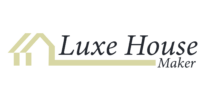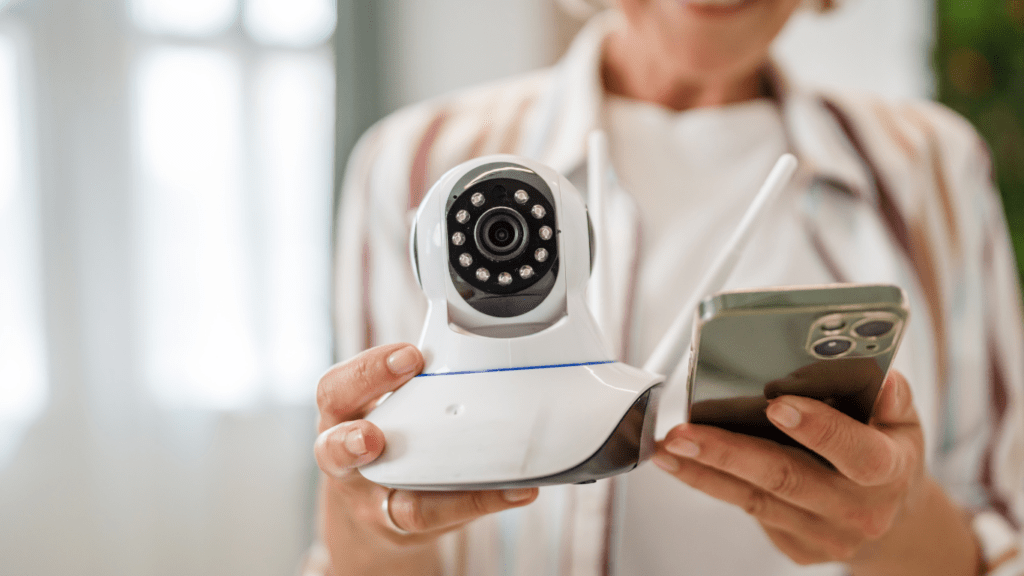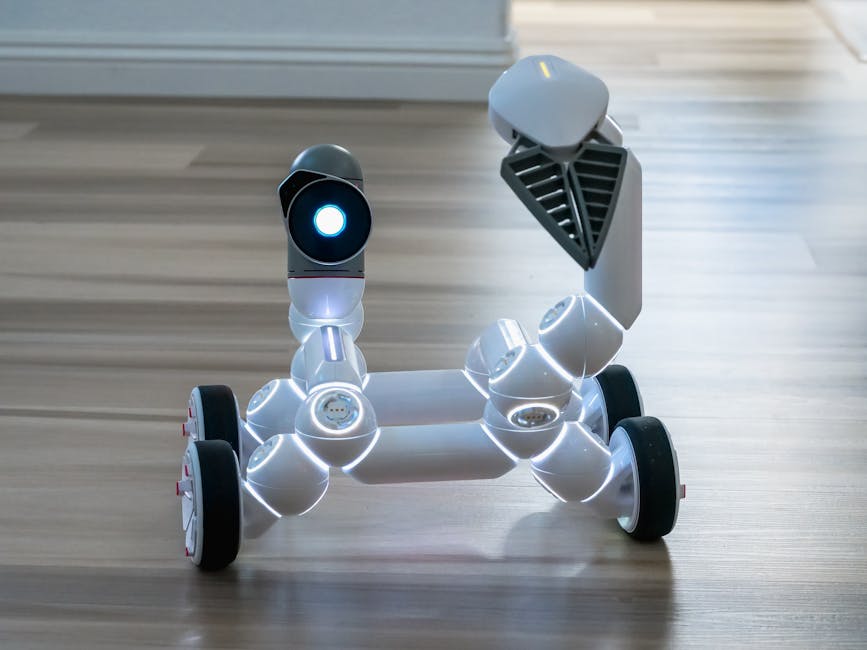Understanding Eco-Friendly Smart Home Tech
Eco-friendly smart home tech combines automation with sustainability. These innovations reduce energy use, lower costs, and promote greener living.
What Is Smart Home Technology?
Smart home technology automates and controls home systems through internet-connected devices. This includes lighting, heating, and appliances. Examples include smart thermostats, voice assistants, and connected security systems. When aiming for eco-friendliness, these technologies focus on minimizing energy use and lowering carbon footprints.
Benefits Of Eco-Friendly Smart Homes
Eco-friendly smart homes offer multiple advantages:
- Reduced Energy Consumption: Devices like smart thermostats optimize heating and cooling schedules to lower energy use. According to the U.S. Department of Energy, smart thermostats can save up to 10% on heating and cooling costs yearly.
- Cost Savings: By using energy-efficient appliances and systems, homeowners save on utility bills. Smart lighting systems, for instance, use LED bulbs that consume less electricity.
- Environmental Impact: Lower energy use means fewer carbon emissions. The Environmental Protection Agency (EPA) states that energy-efficient tech reduces greenhouse gas emissions significantly.
- Convenience: Automation provides ease of use. Voice assistants can control lights, thermostats, and security systems, enhancing both comfort and efficiency.
- Data Insights: Smart home devices track energy use and provide insights for improvement. This data helps identify high energy consumption patterns and implement changes to be more sustainable.
Eco-friendly tech makes sustainable living practical and efficient. It blends modern conveniences with environmental responsibility.
Energy-Efficient Appliances
Eco-friendly smart home technology includes energy-efficient appliances that promote sustainable living. These appliances not only reduce energy consumption, but they also lower utility bills.
Smart Thermostats
Smart thermostats offer precise control over home heating and cooling systems. They learn user habits and adjust temperatures accordingly to optimize energy use. For instance, models like Nest Learning Thermostat and ecobee SmartThermostat can cut heating and cooling costs by up to 23% annually, according to the manufacturers.
Energy-Saving Light Bulbs
Energy-saving light bulbs, such as LEDs or CFLs, consume significantly less electricity than traditional incandescent bulbs. LEDs, for example, use up to 75% less energy and last 25 times longer, according to the US Department of Energy. Integrating these bulbs with smart lighting systems can further enhance efficiency, enabling remote control and scheduling.
Advanced Power Strips
Advanced power strips prevent energy waste by cutting power to devices in standby mode. They help mitigate “phantom loads,” which account for up to 10% of household energy use. Some models, like the Belkin Conserve Switch and TrickleStar Advanced PowerStrip, include timers and activity monitors to optimize energy savings more effectively.
Water Conservation Solutions
Water conservation is a crucial aspect of sustainable living. Integrating smart home technology can significantly reduce water waste and promote responsible water use.
Smart Irrigation Systems
Smart irrigation systems use weather data and soil sensors to optimize watering schedules. These systems, such as Rachio and RainMachine, prevent overwatering by adjusting watering times based on weather forecasts. For example, they’ll delay or skip watering during rainy periods.
Installation is simple and can be controlled via smartphone apps, allowing homeowners to manage their irrigation remotely. Smart irrigation systems can save up to 50% of outdoor water use. In addition, users can monitor water usage patterns and receive alerts on potential leaks or issues, ensuring lawns and gardens receive just the right amount of water.
Water-Saving Faucets And Showers
Water-saving faucets and showers, like those from Moen and Delta, feature advanced aerators. These aerators mix air with water, maintaining strong water pressure while reducing flow rates. Additionally, smart showers by manufacturers like U by Moen offer precise temperature control and timers, enabling users to set maximum shower durations. This not only conserves water but also reduces energy consumption. For example, a WaterSense-labeled faucet can reduce water flow by about 30% compared to standard faucets, promoting efficient water use in everyday activities.
Waste Reduction And Management
Managing waste effectively plays a critical role in sustainable living. Eco-friendly smart home tech aids in reducing and managing waste, making homes more efficient and environmentally responsible.
Smart Recycling Bins
Smart recycling bins streamline the sorting process of household waste. These bins, equipped with sensors, identify materials like:
- glass
- plastic
- metal
When I use these bins, they guide me on where to place each item, minimizing contamination and increasing recycling rates. Some models even feature IoT connectivity for real-time data tracking, allowing me to monitor recycling habits. Examples include the Bin-e Smart Waste Bin, which uses AI to sort and compact waste.
Composting Systems
Composting systems convert organic waste into valuable compost. These systems, designed for indoor use, can handle kitchen scraps like vegetable peels and coffee grounds. Smart composters, such as the Vitamix FoodCycler, accelerate the decomposition process, producing compost in as little as 24 hours. By integrating these systems into my home, I can significantly reduce waste that goes to landfills and enrich my garden soil naturally. Advanced models monitor moisture and temperature levels, ensuring optimal composting conditions.
Home Automation For Reducing Carbon Footprint

Home automation offers numerous ways to minimize energy consumption and lower emissions. By incorporating smart technology, homeowners can significantly reduce their carbon footprint while maintaining comfort and convenience.
Smart Plugs And Switches
Smart plugs and switches help manage energy use by controlling power to devices and appliances. These plugs plug into standard outlets, allowing me to turn devices on or off via a smartphone app or voice command. For instance, I can schedule lights, TVs, or fans to automatically turn off when not in use, eliminating standby power waste. Smart switches integrate with existing lighting systems, providing the same remote control capabilities without needing to replace light fixtures.
Automated Climate Control
Automated climate control systems optimize heating and cooling based on occupancy and weather patterns. By connecting to smart thermostats, these systems learn my schedule and make real-time adjustments to maintain efficient energy use. For example, the thermostat can lower the heating when I’m away and raise it just before I return, ensuring comfort without unnecessary energy expenditure. Integration with weather data allows for predictive temperature adjustments, reducing HVAC energy consumption by up to 15%.
These smart home technologies combine to create an eco-friendly environment, reducing the carbon footprint and promoting sustainable living.
Smart Home Systems And Integration
Integrating smart home systems optimizes eco-friendly operations and enhances convenience. These systems comprise central hubs and devices designed for seamless interoperability.
Central Hubs And Smart Assistants
Central hubs and smart assistants streamline the management of smart devices. Examples include Amazon Echo, Google Home, and Apple HomePod. They consolidate control through voice commands and smartphone apps.
Central hubs provide an interface for managing lighting, heating, and appliances. They use advanced AI to learn user preferences, enabling customized automation routines. For instance, users can set routines where lights turn off when they leave home or adjust the thermostat based on occupancy patterns.
Smart assistants enhance energy efficiency by scheduling operations. For example, users can program thermostats to lower temperatures during the night or remotely monitor energy use through connected apps. This integration minimizes energy waste, promoting sustainable living without sacrificing comfort.
Interoperability Of Devices
Device interoperability ensures seamless communication across different smart home systems. Protocols like Zigbee, Z-Wave, and Matter enable devices from various manufacturers to work together. This compatibility reduces the complexity of managing multiple systems.
Interoperable devices allow for comprehensive control over home operations. For example, integrating smart lights with motion sensors ensures lights only turn on when needed. Similarly, connecting smart plugs with energy monitors allows real-time tracking and optimization of appliance energy use.
Enhanced interoperability fosters a more efficient home ecosystem. Devices coordinate to minimize energy consumption, supporting sustainability goals. For instance, a smart irrigation system, connected to a weather service, can adjust watering schedules based on weather forecasts, further conserving resources.
Implementing smart home systems with robust hubs and interoperable devices significantly contributes to sustainable living. These systems enhance energy efficiency and resource management while maintaining user-friendly convenience.
Cost And Efficiency Analysis
Investing in eco-friendly smart home technology involves considering both the initial costs and long-term savings. I’ll break this down into two key areas: initial investment vs. long-term savings and real-life case studies.
Initial Investment vs. Long-Term Savings
Eco-friendly smart home tech often requires a higher upfront investment compared to traditional systems. Smart thermostats, for instance, can cost between $100 and $250, whereas conventional models range from $25 to $75. Similarly, LED bulbs cost about $2 to $6 each, while incandescent bulbs are around $1. However, the efficiency gains lead to significant cost savings over time. For example, a smart thermostat can reduce heating and cooling bills by up to 15%, translating to savings of approximately $130 annually on an average energy bill (source: Energy.gov). LED bulbs use at least 75% less energy and last 25 times longer than incandescent lighting, significantly reducing replacement and energy costs.
Real-Life Case Studies
Looking at real-life examples underscores the financial benefits of eco-friendly smart home tech. One family in California, for instance, installed smart thermostats, LED lighting, and energy-efficient appliances, cutting their annual energy bill by 30%. Additionally, a small business in New York integrated smart irrigation systems and automated climate control, resulting in a 40% reduction in water and energy expenses. These case studies illustrate how initial investments in smart home technology yield substantial long-term savings and promote sustainability.
| Type | Traditional Cost (USD) | Smart Tech Cost (USD) | Annual Savings (USD) |
|---|---|---|---|
| Thermostat | 25-75 | 100-250 | ~130 |
| Light Bulb (LED) | 1 | 2-6 | 75% energy cost |
These figures highlight the cost-efficient and sustainable benefits of adopting eco-friendly smart home technology.



 Founder & CEO
Irenee Nunezerro is the visionary founder and CEO of Luxe House Maker, with over 15 years of experience in luxury real estate and interior design. Known for her expertise in blending opulence with innovation, Irenee launched Luxe House Maker to provide readers with comprehensive updates on the latest trends in high-end properties, interior décor, and smart home technology. Her passion for creating luxurious, technologically advanced spaces has positioned Luxe House Maker as a leading resource for those seeking to elevate their lifestyles. Irenee’s commitment to delivering cutting-edge content ensures that Luxe House Maker stays at the forefront of the luxury market.
Founder & CEO
Irenee Nunezerro is the visionary founder and CEO of Luxe House Maker, with over 15 years of experience in luxury real estate and interior design. Known for her expertise in blending opulence with innovation, Irenee launched Luxe House Maker to provide readers with comprehensive updates on the latest trends in high-end properties, interior décor, and smart home technology. Her passion for creating luxurious, technologically advanced spaces has positioned Luxe House Maker as a leading resource for those seeking to elevate their lifestyles. Irenee’s commitment to delivering cutting-edge content ensures that Luxe House Maker stays at the forefront of the luxury market.
